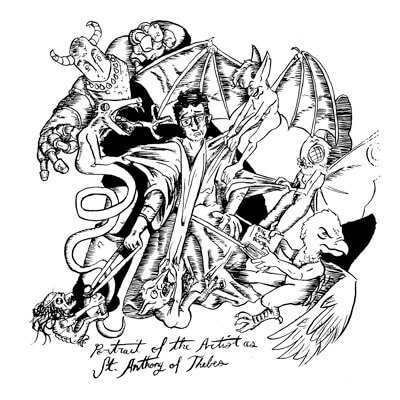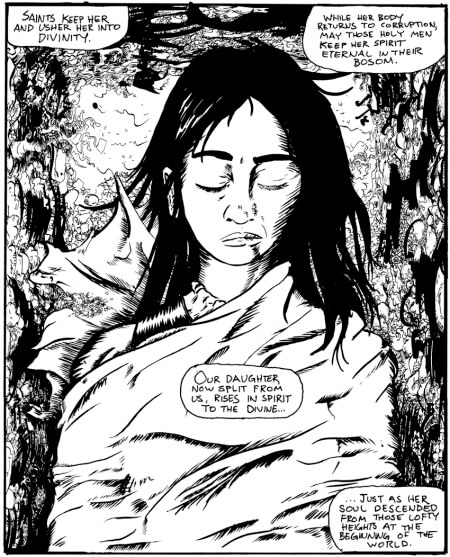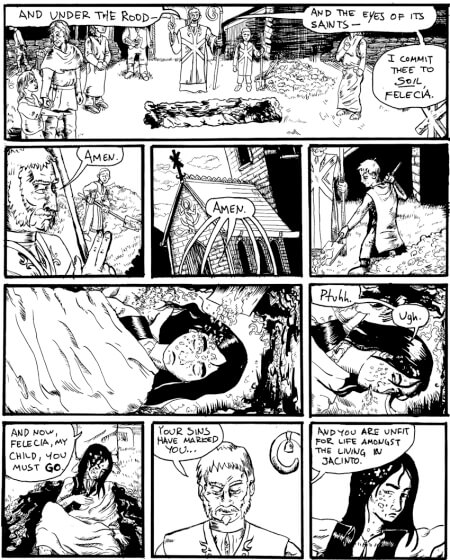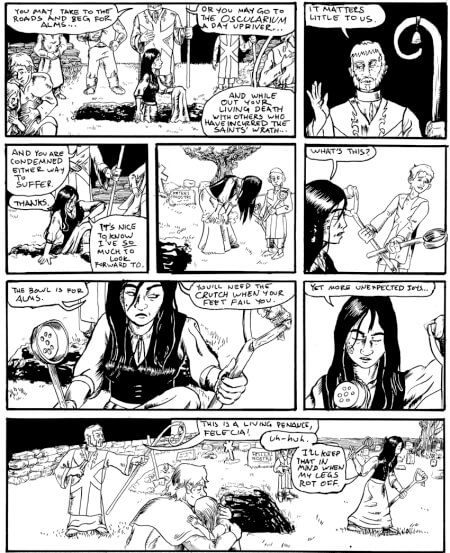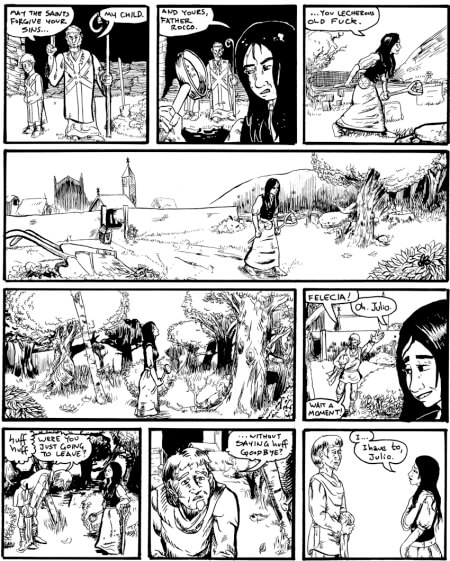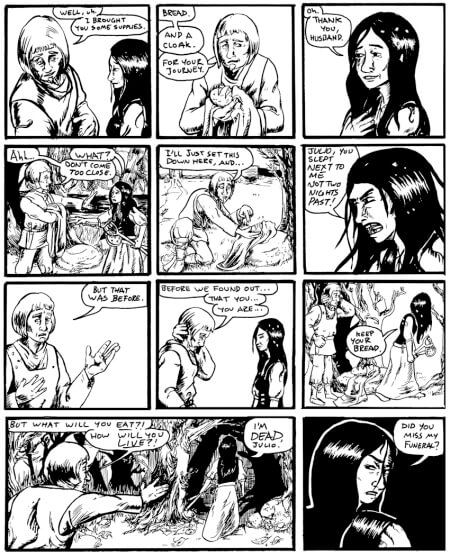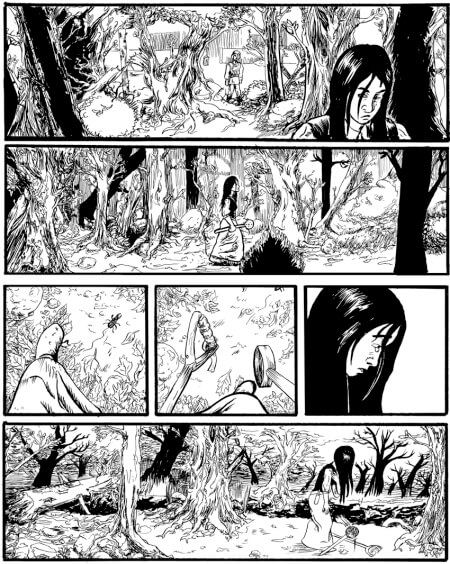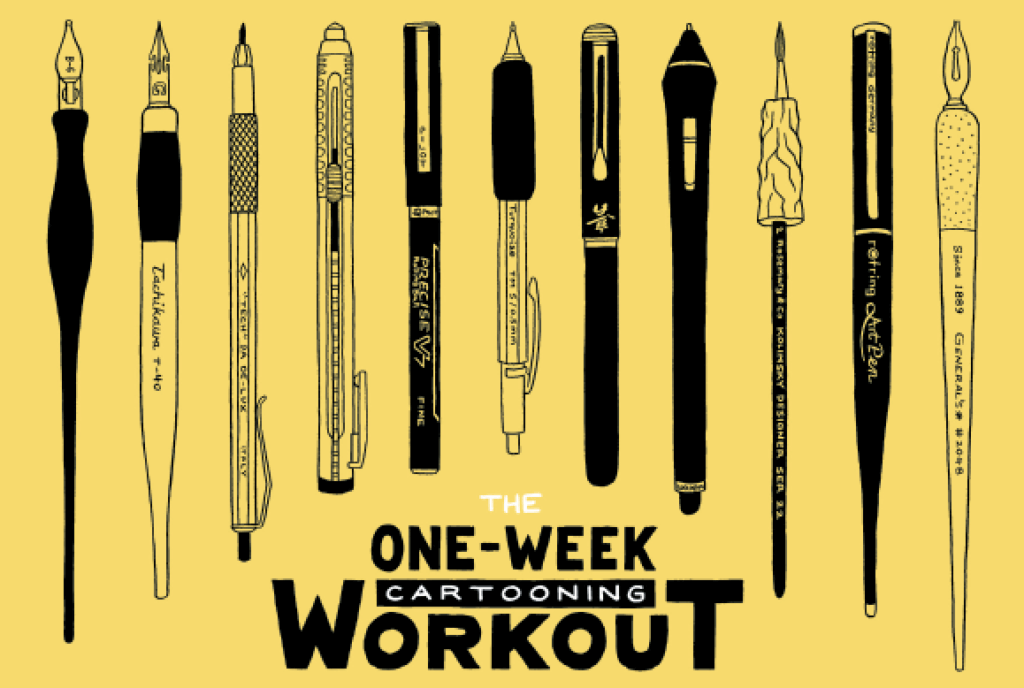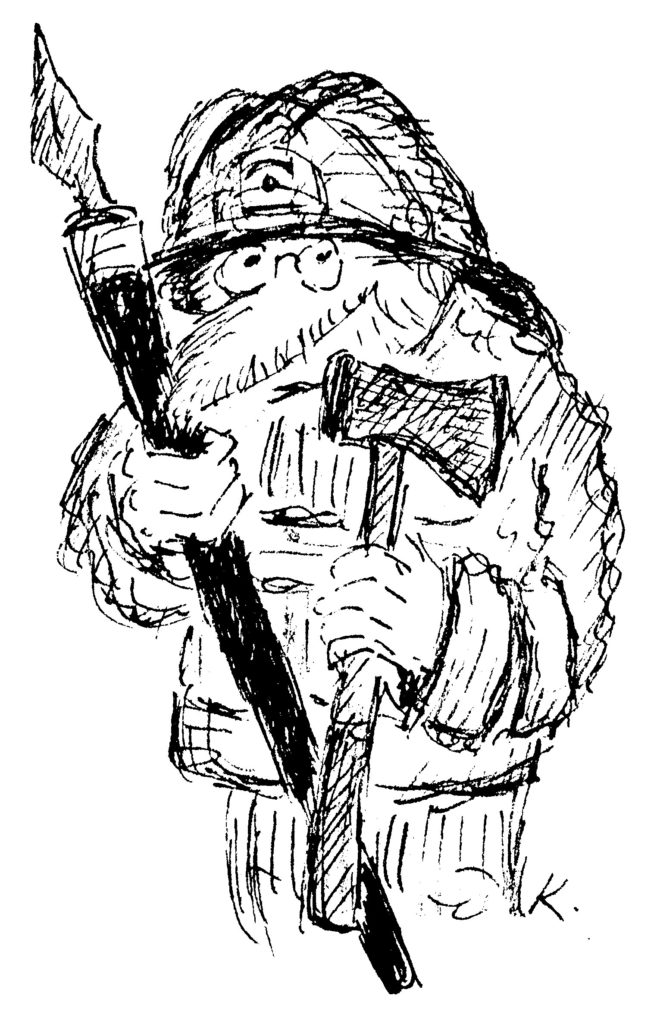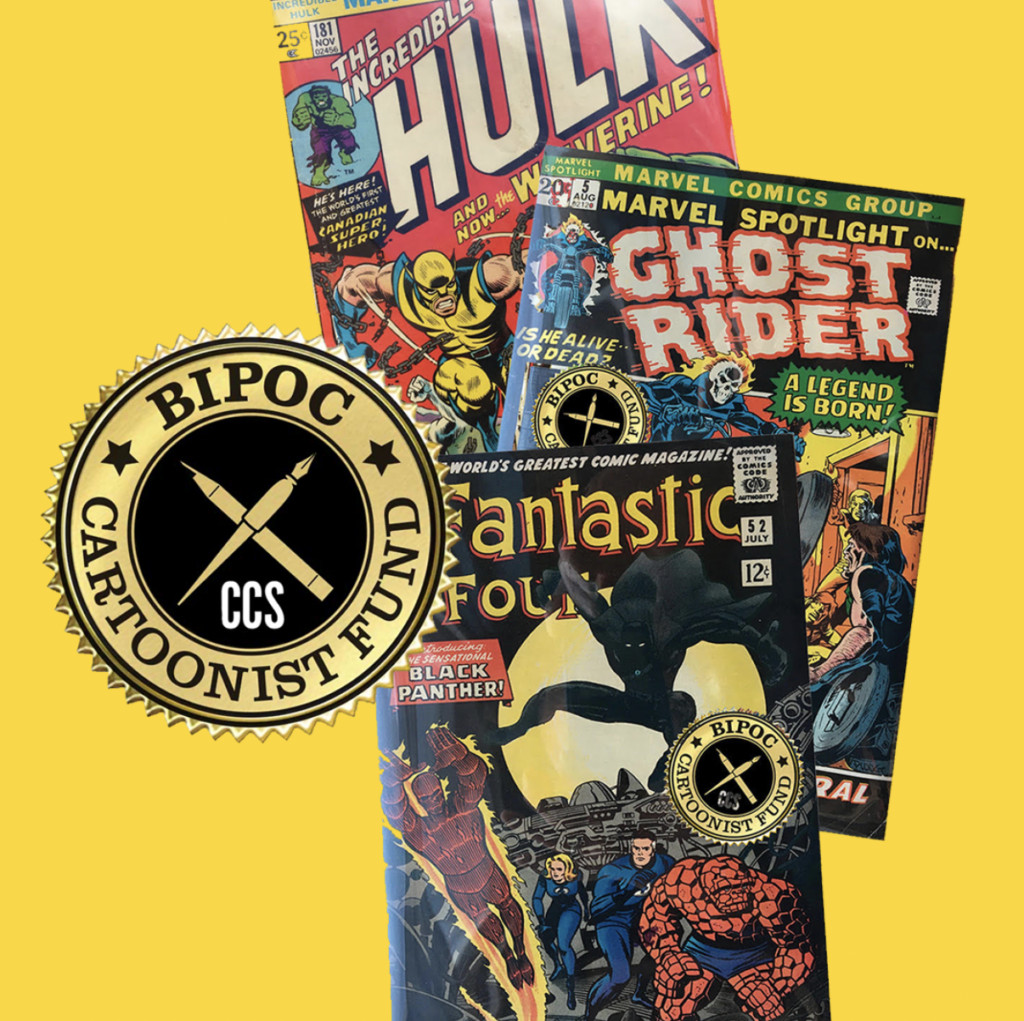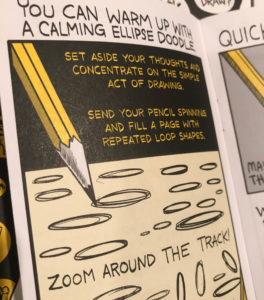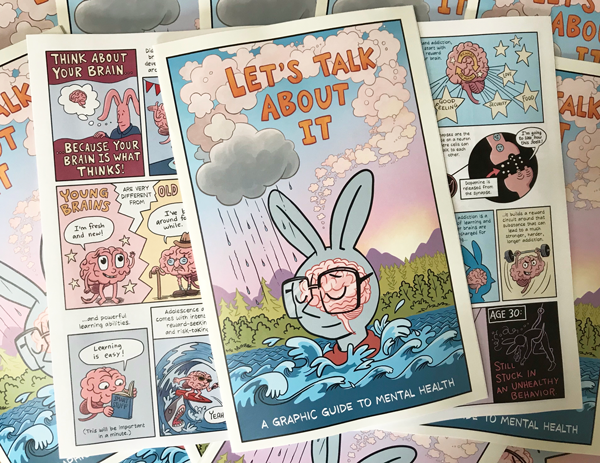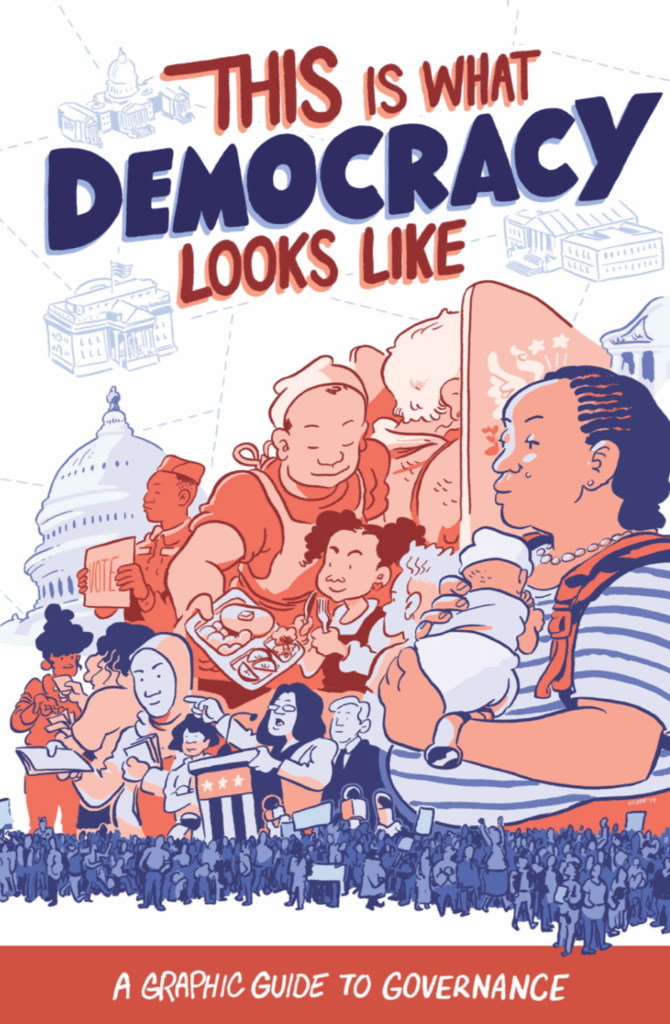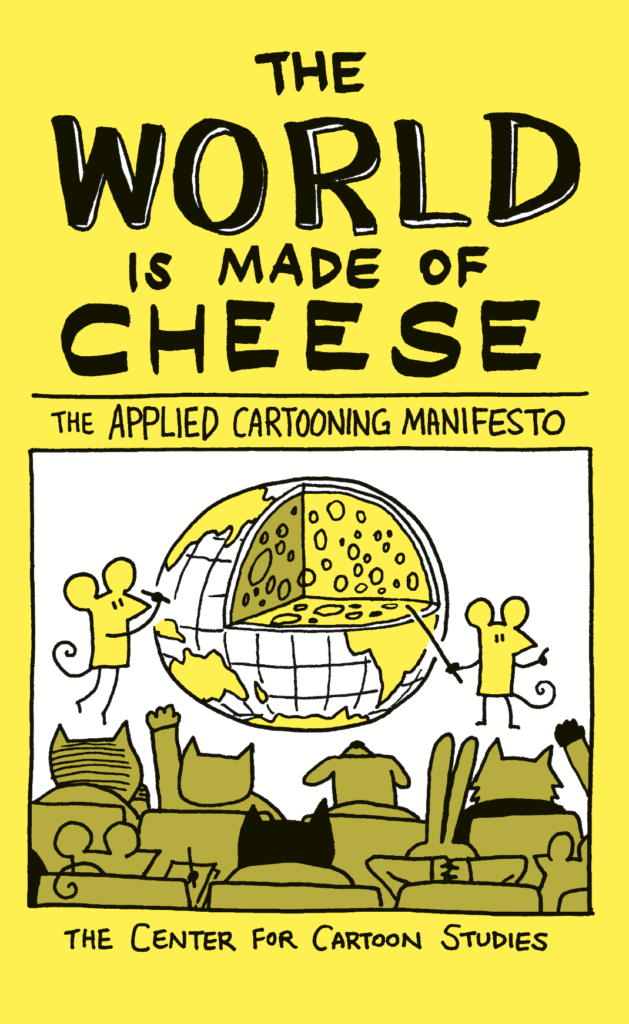April 10, 2018
Carl Antonowicz ′11 is, as he puts it, a “ferret enthusiast and ink-spattered eldritch sea beast.” He is currently working on a live comic, Büer’s Kiss. He sells his mini comics in his own shop as well as at Quimbys (Chicago, IL), and Left Bank Books (Hanover, NH). He did the following interview with Angela Boyle ′16.
Who was your thesis advisor and why did you choose them?
My thesis advisor was the great Guy Davis, creator of The Marquis (Darkhorse, 2009) and artist on Sandman Mystery Theatre (Vertigo, 1995) as well as a significant chunk of BPRD (Darkhorse, 2003). Guy works primarily as a creature designer now, having provided beasties for a bunch of Guillermo del Toro films.
I chose Davis largely because of his creator-owned stuff; I’d found a water damaged copy of his ‘90s project Baker Street at a flea market some years prior and fell in love with his line and his architecture. I’m kind of a sucker for books from the Black-and-White Boom, which didn’t hurt. Davis is great at deadlines and is widely regarded as “the nicest guy in comics,” which, given who I was when I was at CCS, I’m certain I put to the test.
If you could have had any advisor alive or dead, who you would choose?
Oh, I don’t know. Gil Kane (Green Lantern, Spider-Man), maybe? Alex Toth (Space Ghost, Sealab 2020)? Kevin Eastman and Peter Laird (Teenage Mutant Ninja Turtles)? Probably somebody who was good at time management and had similar interests to mine. Those have changed considerably in the intervening years, it should be mentioned. Moebius (Arzach, The Incal)?
Your current project is Büer’s Kiss. What is the premise of the story? Why are you planning to make it a multimedia comic?
Büer’s Kiss is a medieval horror story set in a fictional world that I’ve been creating through a series of unconnected narratives over the course of the past five years or so. Inspired loosely by the Lepers’ Plot of 1321, this project deals with themes of exclusion, community, religion, and persecution.
The story, on more of a plot level, deals with the ordeal of one Felecia of Jacinto, a young woman cast out from her town after contracting a leprosy-like disease. She wanders through the woods till she reaches the colony a few miles away, where she is welcomed with open arms and gaping, sore-speckled mouths. But all is not well: dark forces threaten the survival of the colony from within and without, and Felecia will be forced to take sides in the ensuing conflict.
The project will be a full-length, live comic reading with voice actors, live Foley effects, and projected images.
I chose to make this a performance-oriented work after doing a number of live comics readings over the years. My fiancée, Sophie, and I have been invited to read at shows all over the east coast, which has been a.) a lot of fun, b.) an interesting way to promote the work, c.) an honor and a pleasure, and d.) a way to get the gears turning in my head. I’ve seen dozens of live readings by other creators during this period, from other guests at conventions to full-scale productions at fancy theaters. This fusion of media can be an impressive one, one which has been unfortunately not fully explored. I want to find out more of what we can do.
The New Hazlett Theater here in Pittsburgh has a grant/performance program called CSA: Community Supported Art, which awards a number of fledgling performers a considerable stipend to produce and perform new works in their space. I was honored to be chosen for one of their grants this season and have been doing my damnedest to make them proud.
I am also dumbfounded and honored to have received a Heinz Small Arts Initiative grant to assist me in fulfilling this vision, for whom an additional amount of my damnedest is being done. I would not have been able to get this far in this process without these contributions.
It’s a wonder that more cartoonists don’t apply for grants: if you’re a decent writer and have passable interpersonal skills, you can and should look into what your local arts organization can do for you!
What is your comic-creation process?
I tend to work in chunks; that is, I’ll pencil a section and then start inking it while penciling the next section. I learned something from Paul Karasik that he very appropriately calls “Hide the Curve.” Instead of penciling straight through in order, pages 1-100, instead I’ll pencil page 1, page 20, then 2 and 19, then 3 and 18 and so on. Likewise, for inking. This helps obscure the little burps in technique and style that will inevitably occur, so there’s a consistent feel to the art all the way through.
That being said, I had to teach myself how to draw horses for this project, and I definitely put those pages off as long as I could. I mean, have you LOOKED at a horse’s legs recently? What drunken god created that?
What are your favorite tools?
At the moment I seem to be using my G-nib and Hunt 102 in addition to a Windsor Newton size 1 brush. My favorite tools, however, are the ones that work best for the job. A few of my other projects have been drawn exclusively with Rapidographs, for example.
Tags: Baker Street, BPRD, Büer’s Kiss, Carl Antonowicz, Cartoon Studies, Guy Davis, interview, Paul Karasik, performance, Sandman Mystery Theatre, The Marquis, thesis advisor, tools
